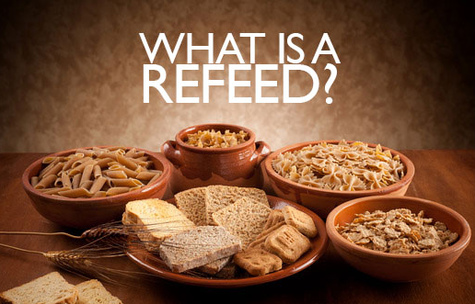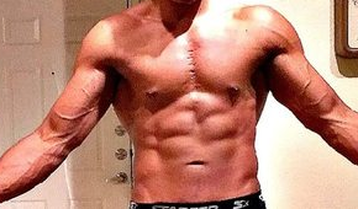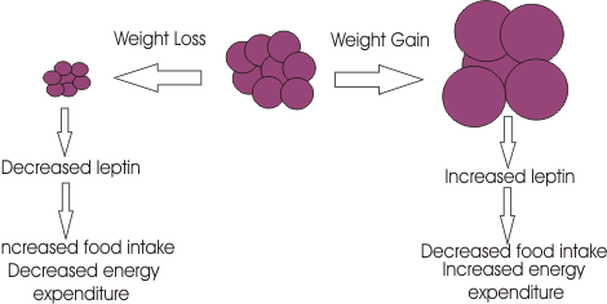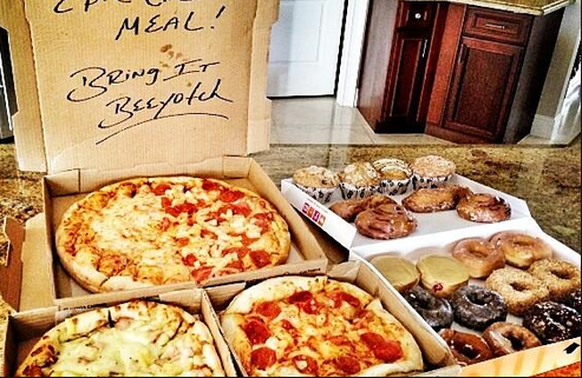You’ve probably heard this term thrown a round by your fitness enthusiast friends.
Personally, the word “refeed” disgusts me and I flat out don’t like it.
Makes me think of a procedure a livestock animal might incur a few days before being processed for our eating pleasures.
I like to refer to these “refeeds” as short periods of strategic over consumption.
Not as catchy as “refeed”, I know.
I started with a bodyweight of 167 at roughly 9% bodyfat.
Every week included 5 days of a large caloric defecit followed by 30 hours of a carbpocolypse refeed of 1200 grams of carbs.
This happened continuously for 8 weeks.
As of today, I weigh 160 pounds at roughly 6% body fat.
That’s 7 pounds of body fat in 8 weeks starting from an all ready lean body composition.
So before I digress any further, let’s make like Alice and tumble down this dank and dingy rabbit hole of a topic.
To understand what’s happening on a biological level during periods of overfeedings, it’s important to know what the hormone leptin is and how it works for fat loss.
Leptin is a hormone that is synthesized in fat cells and is directly controlled by factors such as the amount and size of your body fat cells.
Leptins main function in your body is to play a significant role in regulating hunger signals/responses, food intake, and energy expenditure.
In fact it’s your bodies deciding factor whether you’re going to torch body fat like a fiery inferno, or cling to every last bit of it.
When leptin levels decrease you’ll notice the intensity of your hunger and cravings for food increase. If you’ve ever dieted, you’re more than familiar with this.
But when you’re in a fed state, or caloric surplus, you might notice you aren’t exactly dying of hunger pangs like you would be if you were on a diet. This is when leptin levels are high.
Now that we know and understand the importance of leptin, let’s talk about how we can elevate leptin levels during extensive periods of underfeeding: or more commonly known as dieting.
I hope you see where this is leading.
Enter: REFEEDS.
I’m going to state is first and make it as clear as possible.
A REFEED IS NOT AN EXCUSE TO BE A FAT KID.
A REFEED IS NOT AN EXCUSE TO EAT 2 LARGE PIZZAS THEN GO TO THE BAR
A REFFEED IS AN EXCUSE TO EAT EVERYTHING IN SIGHT BECAUSE YOU’VE BEEN ON A CALORIC RESTRICTION DIET FOR 3 DAYS.
This is why I like to use the term SHORT PERIOD OF STRATEGIC OVER FEEDING.
SHORT
So refeeds will almost always be SHORT in duration. We’re talking periods of a few hours to no more than 36 hours.
STRATEGY
STRATEGY is paramount in refeeds.
You just can’t decide to go hard at Krispy Kreme all willy-nilly and decide to call it a refeed.
That’s stupid. It’s only after a certain extended duration of dieting AND weight training that you will need to refeed.
It also depends on your current body composition.
Someone who is 20 pounds overweight will not need to refeed very often.
Conversely, someone who is all ready extremely lean and looking to get into levels of 6-9% body fat will have to refeed once or twice a week!
Remember this. It’s a good incentive to be lean. You get to eat more fun foods.
OVER FEEDING
So what exactly can you eat during a refeed?
Almost 100% of the time, refeeds will be based on an increase of carbohydrates.
Carbohydrates (aka the Devil’s Nectar, for most folks) have a large effect on increasing leptin levels. More than fat. And yes, more than protein.
By dramatically increasing the amount of carbohydrates you consume, you can essentially jump-start your fat cell’s leptin production and give your adapative metabolism a much needed boost to continue fat loss.
How dramatic of an increase?
Typical refeeds should consist of roughly 350-1000 grams of carbs, strictly depending on multiple factors such as current weight, body composition, training, etc.
Sounds like fun, doesn’t it.
There aren’t a whole lot of cons to refeeds, but there are 2 caveats to be aware of if you decide to implement a refeed.
1. Know your limit- it is easy to get carried away eating excess carbs. If you’ve been on a reduced carb diet for an extended period of time, putting down 500 grams of carbs in a single sitting becomes light work. And you’ll still be hungry.
It’s also easy to start shoveling down fat-loaded foods such as pizza, donuts, cakes, and ice cream. A few indulgences don’t hurt, but when excess fat is consumed with excess carbs, guess what happens? Carbs get used for energy and fat gets stored as fat. So be smart when you decided to get down on the House of Carbs.
2. Taking 3 steps forward, 1 step back- This one isn’t so much of a con as it is a calculated cost. I say 3 steps forward, because if you decide to diet on a large calorie defecit (which I advocate for most folks) you will see tremendous weight/fat loss happen almost on a daily basis. But this will only last so long and get you so far before your body catches on and fat loss stalls. So you throw down some carbs to raise leptin and get your metabolism humming again, right? Correct. The 1 step backward comes with the fact that a bolus amount of carbs might lead to small amount of fat gain. But the bright side is your leptin levels will be restored and the next bout of carb/calorie restriction will lead to a jump starting of the fat burning process again and bust you out of that fat loss stagnation.
- Refeeds are a good tool to use to boost leptin levels
- Resetting leptin levels with a refeed of increased carbohydrates will ensure that your body can continue to burn fat during extended bouts of low carb/calories.
- Refeeds should can last from a few hours to no longer than 2 days
- Refeeds are typically require high amounts of carbs and as little amount of dietary fat as possible
- Folks with more body fat will need to refeed less often than those with less body fat
- Cyclical dieting with extended periods of reduced carbs and short duration refeeds will be of the greatest benefit
It sounds counterintuitive to eat more in order to lose weight but it works. And works extremely effectively.
As always, if you’d like some more information on the topic or want to get started with an effective cyclical diet that includes refeeds, feel free to contact me.





